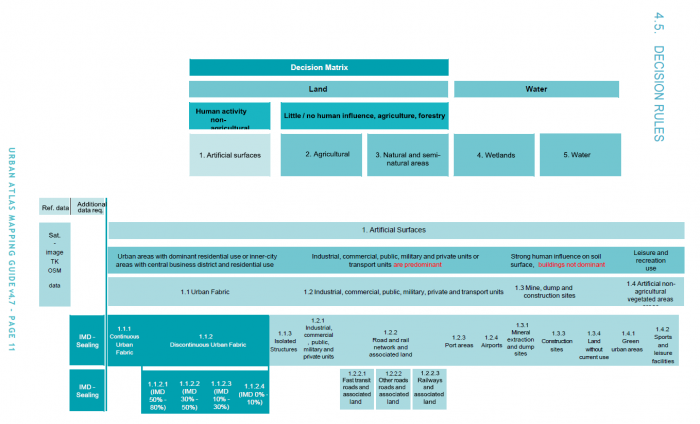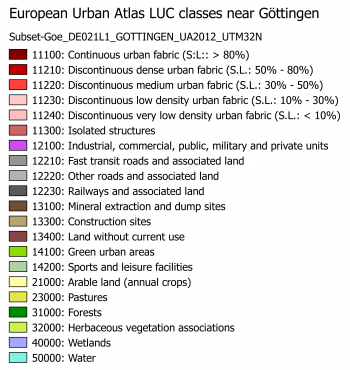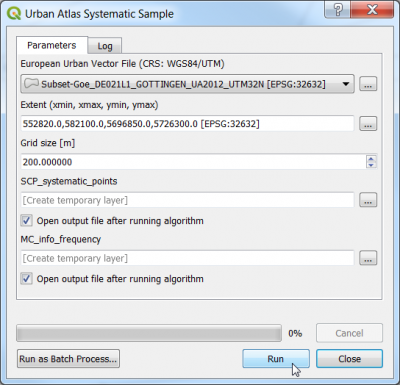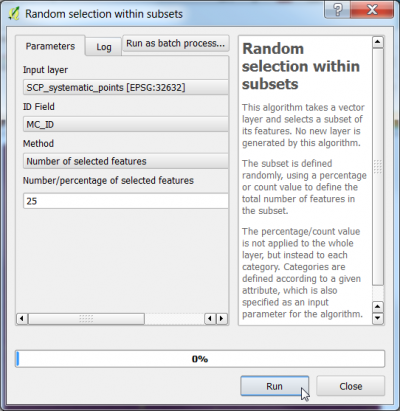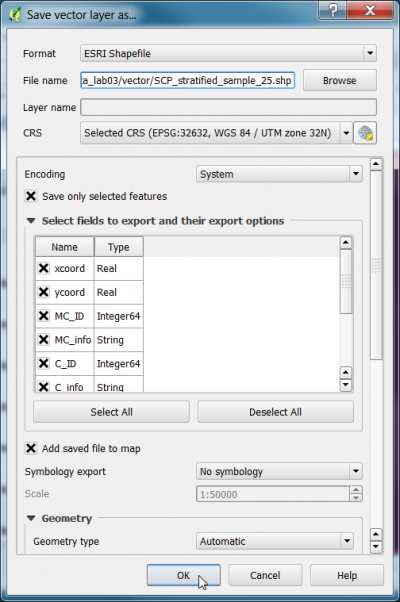Training data selection (SCP)
(→Creating systematic sampling grid) |
(→Stratified random sampling) |
||
| Line 97: | Line 97: | ||
==Stratified random sampling== | ==Stratified random sampling== | ||
| − | + | * {{mitem|text=Vector --> Resarch Tools --> Random selection within subsets}} | |
| − | + | [[File:qgis_stratified_selection.png|400px]] | |
| + | [[File:qgis_save_selection.png|400px]] | ||
[[category:QGIS Tutorial]] | [[category:QGIS Tutorial]] | ||
Revision as of 16:22, 19 April 2018
Defining land use/cover classes
Before starting to map land cover classes using Sentinel-2 satellite images we need clear definitions and a classification scheme. An example for a hierarchical land use and land cover (LUC) classification scheme is the European Urban Atlas. The scheme defines 5 meta classes where the class 1. Artificial surfaces has many sub classes as shown in figure A.
The specification of other meta classes is not as detailed. If we are more interested in forest and open area classes we need to adapt and modify this scheme. On the lowest level not all classes defined in the European Urban Atlas do also appear in the surroundings of Göttingen (figure B). In addition we need to consider the phenolgical development of vegetation at specific acquisiton dates and to specify more classes which can possibly be identified in multispectral feature space of the satellite image. An example of an adapted simplified scheme is shown in the table below.
| MC ID | MC info | C ID | C info | RGB code |
|---|---|---|---|---|
| 1 | Artificial surfaces | 11 | Built-up | 230-77-0 |
| 2 | Agricultural | 21 | Arable land | 255-255-168 |
| 2 | Agricultural | 22 | Bare soil | 253-191-111 |
| 2 | Agricultural | 23 | Pasture | 230-230-77 |
| 3 | Natural and semi-natural areas | 31 | Broad leaved tree cover | 128-255-0 |
| 3 | Natural and semi-natural areas | 32 | Coniferous tree cover | 128-255-0 |
| 4 | Wetlands | 41 | Reed | 128-255-0 |
| 5 | Water | 51 | Water | 128-242-230 |
| 9 | Miscellaneous | 91 | No data (cloud) | 255-255-255 |
| 9 | Miscellaneous | 92 | No data (shadow) | 0-0-0 |
| 9 | Miscellaneous | 93 | No data (missing imagery) | 0-0-0 |
Creating systematic sampling grid
- Use a processing toolbox model downloaded from here urban_atlas_systematic_sample.model (Right click, Save as ..). Note, save the file with the extension *.model.
- Open the Processing --> Toolbox and Models --> Tools --> Add model from file. Load the previously downloaded model.
- The model should appear in the Models tab.
- Double click to open the model.
- Specify an original European Urban Vectors layer for Göttingen: geodata_lab01\vector\DE021L1_GOTTINGEN\Subset-Goe_DE021L1_GOTTINGEN_UA2012_UTM32N.shp or download data from other European cities.
- Project --> Project Properties --> CRS. Check that the Project spatial reference system is set to EPSG:32632.
- Click OK
Stratified random sampling
- Vector --> Resarch Tools --> Random selection within subsets
